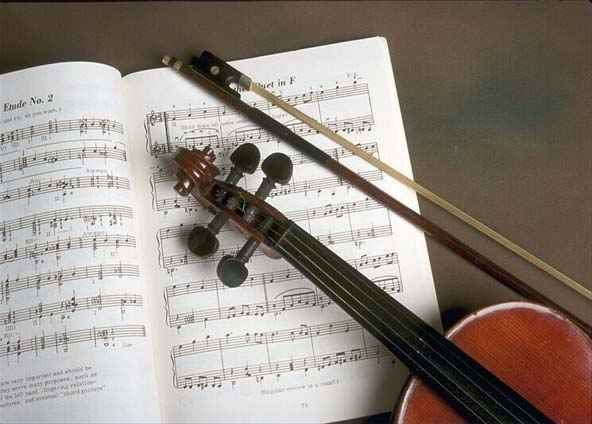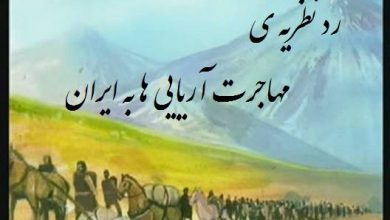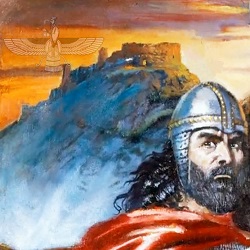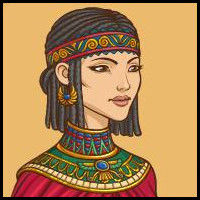Music in the Sasanian period

Music is one of the highlights of urbanism(civilization) It is considered Sassanid and the available data shows its prevalence and extent among the Mahan and also the masses of the people..
It is enough for the high status of music art during the Sassanid period, Ardeshir I placed all those whose work was related to music in a special class and this system(System) During the time of other kings, it was more or less guarded.
Mani the Iranian prophet, "He considers the basis and position of singing very high and with great effort spread and expanded religious music in his religion"(history of literature, Ripka, ص 94) And Mazdak recognized music as one of the Minoan forces, Rameshgarh(music supervisor) He was one of the four elders and honorable relatives of the king - next to Mobadan, Hirbadan and Eran Sepahbod- had given place(Iranian civilization, ص 211)
The Pahlavi treatise of Khosrow Kwatan Vardik(Khosrow, the son of Quad and Ghulam) which has been dealt with in the form of a story, It shows that music was one of Anoushirvan's passions.
…
Herodotus and Xenophon report the existence of religious and war music among the Achaemenians.(Social history of Iran, rhubarb, C1, ص 761) After the reports we have from the classical Greek sources about music, You can go to Ferdowsi's Shahnameh, in which Khuniya(Music) And the tools of Khonia and Ramesh have been mentioned. For example, we can mention two stories about the life of Bahram Gur, which by examining them, we can find out that the villagers and the masses of people were also familiar with music and joyful instruments.. In the first story - which is subtitled "The Story of Bahram Gur with Four Sisters"- Paid, Bahram when returning from hunting, In the evening, he sees a fire in the distance and the horse moves towards it, and after arriving, he sees a number in front of the village next to the village, where a party has been arranged and four girls are busy dancing.:
All the moons and all the hair are all greasy and all the musk smells
Recently, in Asia, there was a thread stretched on his arm
He stands watching until the old miller comes to him and says: These are my daughters who have reached this age(the reason) poverty, They have not found Shui and Bahram accepts all four girls as his wife.(Shah nameh, joule mol, C 5, ص 98-265) In the last story - the title of which is "Bahram Gour's visit to Nakhchir and asking for the daughters of Barzin Dehgan"- We read that Bahram Gore is looking for his revenge, It reaches a garden next to a village:
His land is ready for Diba *** all the gardens are full of servants and desires
Three girls are sitting on the throne of Cho Aaj *** to the head of the crown of Zepiroze Taj
Then it is revealed that Darak's garden(property) Dehgan is a semi-arid village named Barzin. Barzin comes to the king and with the help of his daughters, he decorates a royal goat and recognizes his daughters as such.:
One is a chanter and the other is a harpist *** The third leg of the knocker on the breaker
And in the end, Bahram chooses these three daughters of wealthy villagers as his wife.
(The same, ص 14-309)
From the retellings in the sources of Tazi and Parsi, it appears that Bahram Gur, in order for the people not to be deprived of Rameshgar, several thousands of people - from 400 until the 12 Thousands of different sources- Rameshgar brought from India to Iran. Hamzah Esfahani tells this question like this:
"Bahram Gur ordered that the people should work half of the day and spend the other half in comfort, eating and having fun, and the prostitutes and prostitutes should not drink wine.. In this way, the murderers became highly respected and the wages of each of them reached the dam of dirhams. Bahram once saw a group of people who were not having a good time. said: Didn't I stop you from avoiding kindness and trampling? Those people fell down in front of him and said: Rameshgaran asked for more than Durham Dam, But we didn't find it. He ordered until duat and cream(Pen) And they brought a letter and wrote a letter to the king of India and asked him for Rameshgaran and Khunigaran. He sent twelve thousand people. Bahram should spread them to the cities and around his country, And their number increased by generation, so that a small group of their children are still left and they are called Zat.(The history of prophets and kings, ص 3-52)
Ferdowsi says about this that, Bahram gave each of them wheat, cows, and donkeys to farm and make the masses of the people free to work.. But those who were not agricultural workers, They ate the wheat and the cow and only the donkey was left for them, and Bahram saw this, He said to put a load on a donkey and take rivers and streams and wander around and be happy and make the people happy as well.. This tribe is called Luli or Lori in the Shahnameh and several other sources, and they are considered the ancestors of the people who today are known as Koli/Loli/Chinganeh/Qarachi/Gharbalband/Qorshamal and … They are scattered in Iran and all over the world.(Nick: Gypsy and his life, Yahya Zaka; Lulian, goldsmith, Neither Eastern nor Western, human p 82-474; Zat = Caste = Koli, Ahmed Mohit Tabatabai, Future magazine of Farvardin, Khordad 1366; Dictionary of Dehkhoda, Lowry substances, Lolly, can)
The reign of Khosroparviz is considered the golden period of Iranian music and musicians. The pictures left from the time of Khosroparviz always show the soldiers and murderers next to and companions of the king.. The petroglyphs of Taq Bostan show groups of female musicians engaged in playing during royal hunting parties.. Several Sassanian ceramic vessels also have images of male and female rameshgars.
Musicians and singers were part of the artists who Pahlavi PKK: Gosan and in Pahlavi Sasanian and Middle Persian: They were called murderers. These artists are more into musical arts, singing, songwriting, singing, and Gassam(Likely) Storytelling and storytelling were decorated, They mostly performed for the people, and some of them were more talented and skilled, They entered the court and became famous(Gussan: Its verb is Josan and Joasneh, Nick: Ahmad Tafzali's article included in the book guide magazine, Year 11, Number Of 7)
A number of famous musicians and murderers of the Sassanid period, such as, Bad, Nakissa, Ramtin, Sarb and… Through oral and word of mouth retellings, It has entered into legends and myths and historical sources and has reached our times. Among them, Barbad is the most famous of them all. The existing retellings recognize him as the master of all the musicians of his time and it has been said that his speech is "for the masters of(Art), The law is considered unquestionable and others were all his threshing floor.(Iran during the Sassanids, ص 507)
He linked the innovation and invention of Iranian musical instruments and songs such as 7 Khosravani, 30 tone and 360 Hands - with arrangement(order) Days of the Week(7), Month(30) and the year(360)- are counted among his creations. All these songs seem to have been composed for various occasions and to be performed at meetings and parties of Khosroparviz, and that is why they are also called Khosrovaniyat.. It can be assumed that these wonderful songs are attributed to Barbod, They existed before him and he made them in a comprehensive and flawless form. Nezami Ganjavi in the seventh chapter of "Safat Barbad Matrab" story of Khosrow and Shirin Nam 29 The tone of the thirty barbed tones - each in a verse- has brought.(Khosrow and Shirin, the rich, 42-339) Nizami is one of Khosroparviz's plays - in which Shirin was also present- has turned it into a chame in which Barbod and Nakissa have made a commotion. This chame is really one of the most artistic parts of Ganja and Aran storytellers.(Khosrow and Shirin, the rich, ص 42-339)
There have been many stories about the art of Barbod and other musicians and artists, for example, the rivalry between Barbod and Rogue reached the hands of Ferdowsi and Thaalabi and has been remembered for us.. The story is like this:
Sarkesh Rameshgar was the supervisor of musicians and singers in Khosroparviz's court. Barbod the murderer to get to the court, He came to the capital, But rebellious after learning about his story, In order to keep his position, he bribed the salarbar to prevent him from entering the court. Barbad, who had despaired of finding a way to the court, With the gardener of the garden where Khosrow spends two weeks of Nowruz, He was an accomplice and the day when Khosrow was in the garden, he hid in a cypress tree near the Shah's festival with his robes and harp and the green river, and at sunset when Parviz had a warm head from the wind., In his hiding place, he played a song called "Dad Afrid".. Hearing this, the rogue fainted and the king and other companions regained consciousness, But no matter what they looked for, they found no sign of him. After that and when the other cup was given to Parvez, He transformed Barbad Rood and wrote a song called "Battle".. This time, no matter what they looked for, they did not find anyone. Once again, at the right time, he composed and played a song called "Green on Green" and finally, with Khosrow's request, he crawled out and went to the king and told his story.. Then Barbad became the king of Rameshgaran and a prominent member of Mehtaran…
Barbad's position in the court became so high that Shirin-Sugli Khosroparviz- He sent Barbad to mediate with the king. Barbad's mediation has been talked about a lot in the stories. For example, when Shabdiz - the lovely and incomparable horse of Khosroparviz- dies, The courtiers were afraid of the dire consequences of conveying this unpleasant knowledge to the strict king, They went hand in hand, and by making a clever hymn, he brought Khosroparviz to a place where he unwittingly uttered it.: As if Shabdiz is dead!
According to Tha'alabi's writing, Barbad is poisoned by the hand of his rival's rogue, and Khosroparviz, after learning about this incident, tells the rogue: I was pleased to listen to Barbad's instrument after your song and to hear your instrument after his song. You have taken away my happiness just now, worthy of death. The rogue also says in response: It is true that I have destroyed half of your happiness, but you will also destroy the remaining half.. But Ferdowsi has a different story and notes that after the overthrow of Khosrow Parviz and his imprisonment, he brought himself to Khosrow in prison and sang a tearful song to him and promised out of loyalty that he would not play music after that. And for the steadfastness of the king:
Take all four of your fingers *** He had a cut in his fist
When he got home, he lit a fire and burned all his penis
(Shah nameh, joule mol, C7, 96-194)
A lot of musical instruments and musical instruments were common in this period and some of them still remain and have not disappeared.. From this category, you can use tools such as Tabireh/Kos/Sang(gauge)/Prapat(bind)/Tambor/flute/sornay/harp/chaganeh/rud/daf and .. named.
Authors of Islamic centuries have also mentioned the musical melody of the Sassanid period. Name close to 150 The tone and song have survived today, which can be seen from that category, Takht Taqdis/Ganj Badvard/Great Nowruz/Saz Nowruz/Bad Nowruz/Khon Siavash/Kin Iraj/Shabdiz and… named(History of Sassanid Iranian Civilization, ص 4-13) We have to remember that oriental music is very conservative and if we listen to Iranian music that is still in vogue(Under the influence) Listen to European music not placed, It can be assumed that music during the time of Khosrow II - the beginning of the 7th century AD- what has been(Iran during the Sassanids, p. 205)





